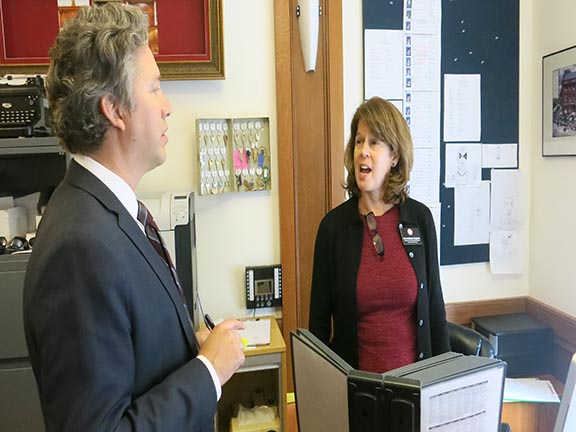Breaking through the glass ceiling
Females succeed in traditionally male-dominated fields

December 10, 2015
With women currently holding only 4.6 percent of CEO positions in fortune 500 companies, those who face discrimination in the workplace must deal with corporate norms challenging them to break through the glass ceiling, but activists and female leaders have hope.
“Breaking through the glass ceiling is something that is very prevalent right now,” sophomore Jocelyn Shilakes, a league delegate for League of Creative Minds, an independent academic debate program, said. “Even though we are trying to achieve it, the more and more women that display interest in becoming more active in politics, the greater that ceiling will break.”
A glass ceiling limits women and minorities from achieving jobs high on the corporate ladder and working to their fullest potential.
“In my debate, a large amount of the people who do it are boys,” Shilakes said. “I’ve really had to learn to step in there and say what I want to say and to make sure that my point is conveyed properly.”
The employment-to-population ratio between men and women is unequal, with the male ratio being 25 percent more than women at 47 percent, according to the International Labour Organization.
“When I met other women that had been there for a long time, I would thank them so much because they really put up with a lot and by the time I got in, it was a pretty comfortable situation, comparatively,” SHB Administrative Assistant Katie Zepeda, who spent 14 years as a firefighter for the San Francisco Fire Department, said.
There were 50 female firefighters at the time she joined the SFFD, according to Zepeda.
“There was another woman on the engine almost everyday with me, and she was a really good firefighter,” Zepeda said. “I could sense that the guys had a lot of confidence in the job that she did. It was heartening because I began to think, ‘Well when I get trained and I learn, then I too can be respected for the job that I do.’”
When former San Francisco mayor Gavin Newsom appointed six women during his term to positions including fire chief, medical examiner, police chief and port director, San Francisco became the largest urban workforce city with women in charge of emergencies than anywhere else in the United States, according to SFFD.
Chief of Department Joanne Hayes-White was the first woman appointed to the job, and the 25th chief of department.
“Although at times I feel there may be a higher level of scrutiny, it is ultimately about always performing at a high level with integrity,” Chief of Department Joanne Hayes-White said.
Both Hayes-White and Zepeda recognized that most important quality of a leader is confidence, no matter a person’s gender.
“I think we, as girls, have a really different opinion, and mindset on a lot of the topics that our country is facing today,” Shilakes said. “I think we have a lot of value that we can contribute to politics, in general.”
Fifty-two percent of students reported that they had felt discouraged outside of the Convent community because of her gender, according to a survey collected by the Broadview staff.
“Convent definitely encourages students to break through the glass ceiling,” Shilakes said. “We are really asked to question stereotypes and address many current events. In all these classes, we are not only inspired, but expected, to come forth and share our opinions, to be really concrete in what we think. If we want to choose something, we are driven to achieve it.”









